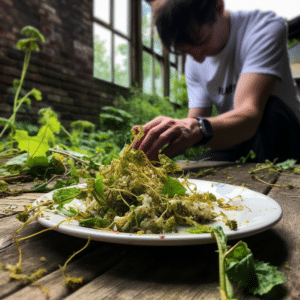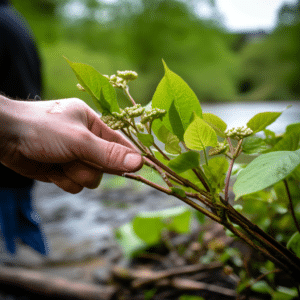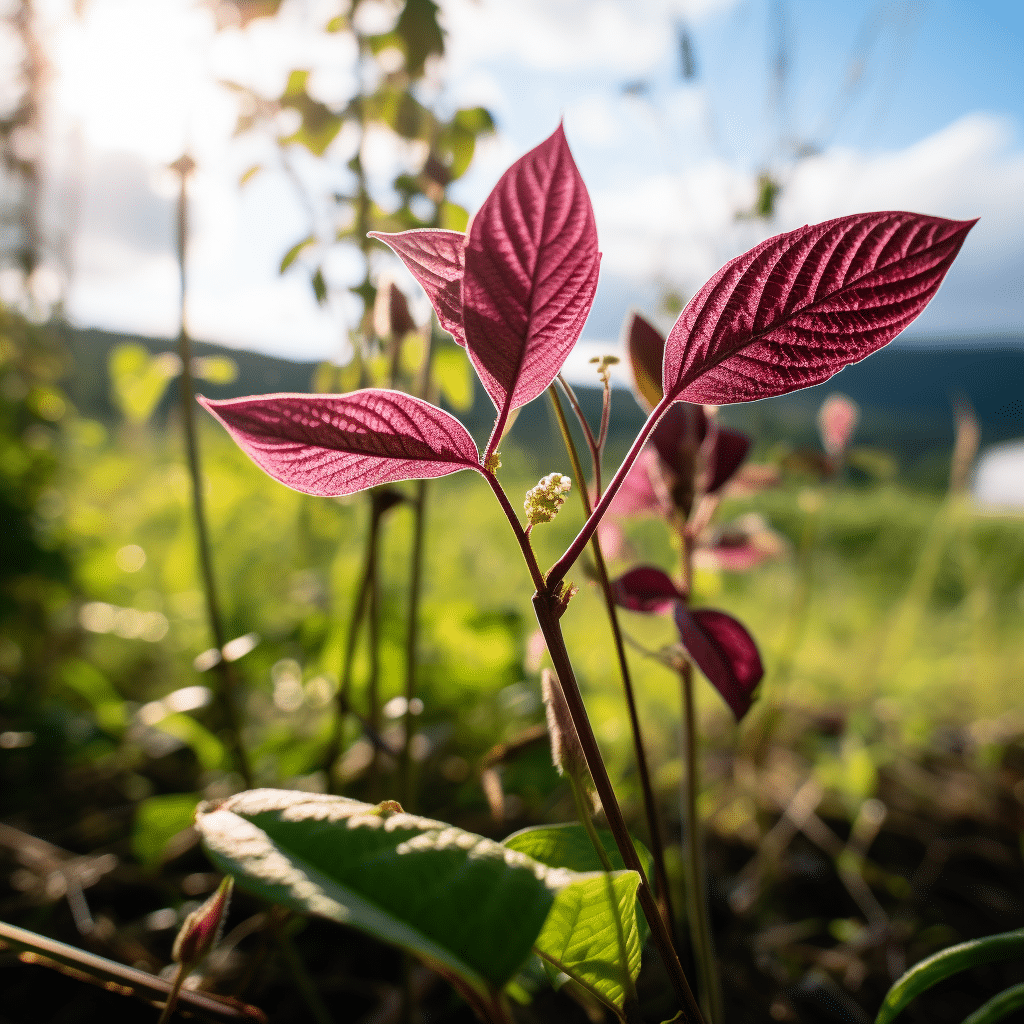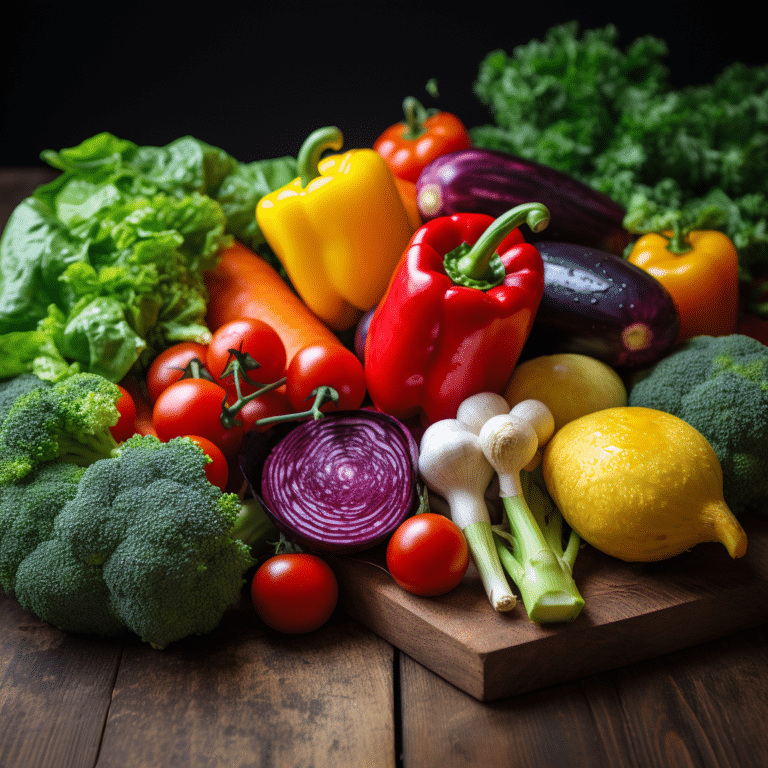Eating Japanese Knotweed: Benefits and Precautions
Eating Japanese Knotweed: Japanese knotweed is a nightmare to gardeners. That’s so because it spreads like a bush fire through borders and beds, destroying buildings and may ruin your opportunity of getting a mortgage. This weed is very aggressive and can grow 3 feet (almost 1 meter) in a month, sending roots up to 10 feet into the earth. And although this plant has a bad reputation, it’s not all that bad. So, can you eat Japanese knotweed? Stay locked.

Can You Eat Japanese Knotweed?
Yes, you can eat Japanese knotweed. It contains high amounts of vitamin A and C, phosphorus, potassium, zinc, and manganese. This plant has also been used for decades in its native countries to cure illnesses like respiratory infections. What’s more, Japanese knotweed’s roots contain the highest amounts of resveratrol antioxidants which can help you lower your blood’s cholesterol levels, protect your nerves, and provide anti-tumor effects. However, you’ll need to eat a huge amount to get results.
While Japanese knotweed is edible with health benefits, you need to pay special attention when considering eating this plant. Otherwise, you risk hurting your health. Some of the things you need to consider when eating Japanese knotweed include:
Not All Part Are Eaten
Like its relative botanical rhubarb, not all parts of the Japanese knotweed are eaten. Pick the shoots when tender in early spring, about 25 cm (10 inches) or less. Waiting too long would result in the stems being too woody and hard. And this will require you to peel the tough outer layer first before cooking. The rhizomes, which have medicinal value, are also eaten, and the fruits are usually stored in oil.
You can eat Japanese knotweed raw or cook it. But take caution as some people may be allergic to raw knotweed, leading to skin irritation. Cook this herb the same you would cook with rhubarb. The shoots’ taste is a blend between rhubarb and asparagus. Thus, knotweed and rhubarb are interchangeable, and you can use knotweed in recipes that call for rhubarb. The best cooking methods include grilling and sauteeing. You can also use knotweed in pickles, soups, sauces, pies, chutneys, and jams. Cooked knotweed has a robust and tangy flavor, like rhubarb.
Eaten Japanese Knotweed During Specific Times
You cannot eat Japanese knotweed anytime you want. Particular times of the year are ideal for eating this plant. The best time to eat knotweed is in early spring, between mid-April to May. During this time, the shoots are tender, unlike other seasons.
There Are Rules Regarding Japanese Knotweed
If you’re considering planting Japanese knotweed, know that it’s illegal. This plant is hardy, challenging to remove, and often takes over when introduced to a place. For this reason, planting knotweed is against the law. It’s also against the law to remove Japanese knotweed from its original site if you don’t plan to take it to a registered landfill. Doing so can see you being prosecuted by the Environmental Agency.
Be Cautious When Harvesting
There are crucial aspects worth considering when harvesting Japanese knotweed. First, many people take knotweed as a noxious weed. So, they often spray it with toxic chemicals. It’s, therefore, vital to establish whether the plant you want to harvest has been treated with herbicides. Remember also to avoid harvesting knotweed that has grown on contaminated land. Japanese knotweed loves to pop anywhere, including wasteland and industrial sites.
About Japanese Knotweed
The World Conservation Union list Japanese knotweed as the world’s worst invasive species. It’s found in Ohio, New York, Vermont, Alaska, Oregon, West Virginia, Pennsylvania, and Washington. Also known as Reynoutria japonica, Fallopia japonica, or Polygonum cuspidatum, knotweed was first introduced in the United States in the late 1800s as an ornamental plant. Nowadays, it’s found in at least 39 out of the 50 United States and six provinces in Canada. Knotweed is also invading Australia, New Zealand, and Tasmania. The only place that doesn’t care much about this plant is southeast Asia, where it’s native.
This plant is considered exceedingly invasive and has to be disposed of at landfills licensed to handle it. The world spends about three billion dollars annually to combat its spread. In the 2012 Olympics, Japanese knotweed had invaded the stadium, requiring extra 70 million pounds to fight it.
What does this plant look like?
Japanese knotweed is an upright, perennial, herbaceous plant with speckled bamboo-like stems capable of growing beyond 10 feet when mature. It belongs to the Buckwheat family and can grow through concrete, destroying dams, buildings, roads, and anything built by ma.
The plant spreads by rhizomes or roots, and pieces from knotweed can root themselves when cut and discarded. The leaves are broad and grow about 4 inches wide and 6 inches long. Its lacy white clusters of small flowers blossom in late summer. This plant can grow in various soil and weather conditions, whether in the sun or shade. But, it grows best in moist places that have plenty of sun. Japanese knotweed is hardy and hard to remove and often takes control when introduced.
The flowers of this plant are loved by many insects like bees, butterflies, wasps, and beetles. Some beekeepers love knotweed as it is a significant source of nectar for honeybees when the flowers are blossoming. The blossoms produce a mild flavor like buckwheat, and the two are in the same family. Knotweed stalks can also be dried and used to make mason bee hotels.
Resveratrol, obtained from knotweed’s roots, is currently used as an organic bio fungicide spray. The spray helps different crop plants resist many bacterial and fungal diseases.
Japanese knotweed is known differently in various places. Its popular names include Himalayan fleece vine, Tiger Stick, elephant ears, monkey weed, Hancock’s curse, Huzhang, Japanese bamboo, donkey rhubarb, American bamboo, and sally rhubarb, and Mexican bamboo.

Conclusion
Eating Japanese Knotweed, can you eat Japanese knotweed? Yes, you can. But ensure you gather the shoots while they are still young and soft in early spring. Establish where the plant was grown and if sprayed by toxic chemicals before eating. And remember not to discard knotweed anywhere unless it’s a licensed landfill.






